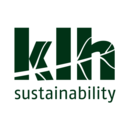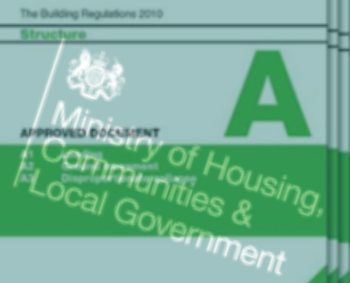Sustainability of Heathrow 2.0
The launch of Heathrow’s revamped sustainability strategy ‘Heathrow 2.0’ set some big, bold ambitions in its effort to become the most sustainable airport in the world. Following a suite of airport best practice, the whole airport will operate on 100% renewable energy by April 2017. In addition, airside vehicles will be electric and hydrogen powered, to operate within the airport’s designated ‘ultra-low emission zone’. Heathrow endeavour to become zero carbon by 2050, and are targeting a carbon neutral third runway. Innovative carbon off-setting measures such as peat land restoration are actively being considered.
Perhaps the ‘Centre of Excellence’ that facilitates research on sustainable innovation, rumoured to cost a six-figure sum, will help to distract from the elephant in the room? That is, the carbon impact of the estimated 260,000 extra flights landing annually at Heathrow, facilitated by the new runway.
Heathrow 2.0 presents a strong case for the minimisation of emissions from sources owned or controlled by Heathrow, known as ‘direct emissions’. A weaker case is made for the indirect emissions; those that are a consequence of Heathrow’s activities, but that occur at sources owned or controlled by another organisation, namely the airlines. The reliance on airlines themselves to address the emissions from aircrafts separate from the airport quickly weakens Heathrow’s carbon neutral sustainability case. But is it right to be directing our frustration of increased aircraft emissions towards Heathrow? Should the responsibility rest solely on the airlines’ mitigation methods or should Heathrow be taking a greater share of the responsibility as they are facilitating the additional aircraft?
When it comes to establishing the boundaries of responsibility for the production of indirect carbon emissions, it can cause controversy, even at an international scale. In many western countries, an ever increasing demand for goods and services is often met by imports from other areas of the world. Yet current emission accounting is focused on emissions related to production only. On this basis, countries are able to import carbon intensive products without assuming any responsibility for the associated, indirect carbon emissions. Should the responsibility not extend to the countries facilitating the production of the goods and services in the first place?
Life cycle analysis techniques have the power to significantly influence the awareness and allocation of responsibility of indirect carbon emissions. Accounting for the embodied carbon recognises both the direct and indirect emissions by considering goods and services within a ‘cradle to grave’ context. Obtusely, indirect operational and maintenance carbon is not often considered within the life cycle analysis. Yet, this is needed to understand a development’s carbon impact in its entirety.
Heathrow are taking responsibility for the indirect carbon emissions during construction, namely the embodied carbon of the new runway, but should they be doing more to address the indirect operational emissions arising from the aircraft? Taking ownership of indirect carbon emissions, whether at a project or a country scale, places additional pressure on organisations and governments to innovate. As we approach the tipping point of the 2 degrees rise in global temperature, it is essential that those actors with the power and resources to influence change take greater responsibility and are held accountable.
[edit] Find out more
[edit] Related articles on Designing Buildings Wiki
- Airports National Policy statement and Heathrow.
- CIBSE Case Study: Christchurch International Airport.
- KLH Sustainability.
- Gatwick second runway.
- Heathrow Airport expansion.
- Heathrow Terminal 5.
- Lifecycle assessment.
- London City Airport expansion.
- Madrid Barajas Airport.
- Procurement of Heathrow T5.
- Sustainability.
- Taiwan Taoyuan International Airport Terminal 3.
- Thames estuary hub airport.
- The Great Barn of 1425-27 at Harmondsworth, Middlesex.
- Whole life costs.
Featured articles and news
The 5 elements of seiri, seiton, seiso, seiketsu and shitsuke.
Shading for housing, a design guide
A look back at embedding a new culture of shading.
The Architectural Technology Awards
The AT Awards 2025 are open for entries!
ECA Blueprint for Electrification
The 'mosaic of interconnected challenges' and how to deliver the UK’s Transition to Clean Power.
Grenfell Tower Principal Contractor Award notice
Tower repair and maintenance contractor announced as demolition contractor.
Passivhaus social homes benefit from heat pump service
Sixteen new homes designed and built to achieve Passivhaus constructed in Dumfries & Galloway.
CABE Publishes Results of 2025 Building Control Survey
Concern over lack of understanding of how roles have changed since the introduction of the BSA 2022.
British Architectural Sculpture 1851-1951
A rich heritage of decorative and figurative sculpture. Book review.
A programme to tackle the lack of diversity.
Independent Building Control review panel
Five members of the newly established, Grenfell Tower Inquiry recommended, panel appointed.
Welsh Recharging Electrical Skills Charter progresses
ECA progressing on the ‘asks’ of the Recharging Electrical Skills Charter at the Senedd in Wales.
A brief history from 1890s to 2020s.
CIOB and CORBON combine forces
To elevate professional standards in Nigeria’s construction industry.
Amendment to the GB Energy Bill welcomed by ECA
Move prevents nationally-owned energy company from investing in solar panels produced by modern slavery.
Gregor Harvie argues that AI is state-sanctioned theft of IP.
Experimental AI housing target help for councils
Experimental AI could help councils meet housing targets by digitising records.
BSRIA Occupant Wellbeing survey BOW
Occupant satisfaction and wellbeing tool inc. physical environment, indoor facilities, functionality and accessibility.
























